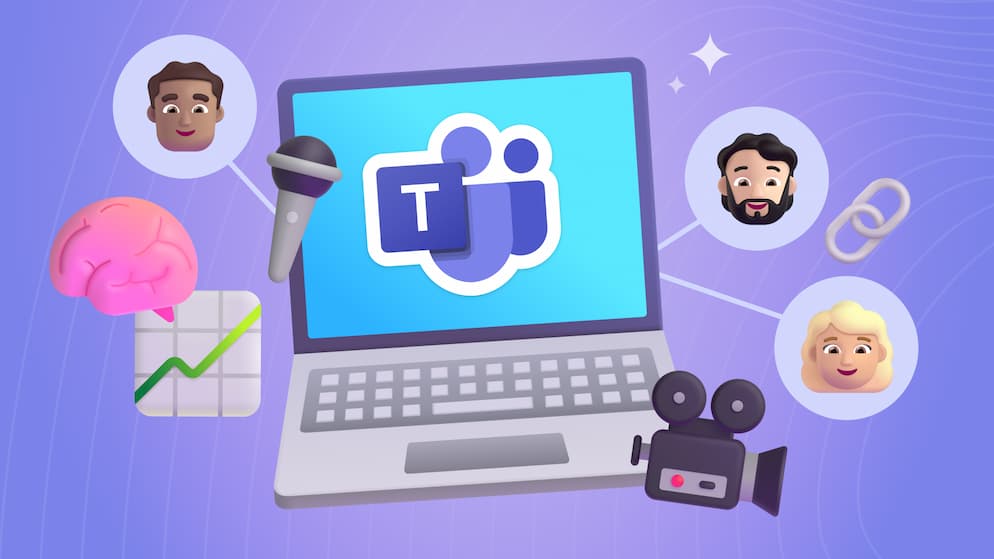Why New Ownership is a Good Time to Modernize Your Workplace
If your organization is going through a transfer of ownership it's important to take the time to be strategic with your changes and goals. Although it may seem like a hectic time, you can take advantage of the transition by modernizing your workplace in the process.
Intro
If your organization is going through a transition of ownership, change is inevitable. Many times, the new ownership team is looking to transform or push the organization. Even when the new owners makes small changes, this time in an organization will be a period of change and transition. The way many organizations approach these changes is too focused, they make often tactical changes without any strategic planning. The result is a lack of transformation in the business. The symptom is alleviated, or a goal is achieved, but it stops there and further improvement is lost. My goal in this article, is to help you see these changes as part of a bigger transition in your organization, often referred to as modernizing your workplace. By doing this, your organization can capitalize on the disruption that occurs when ownership changes.
Common Themes When New Ownership Changes
There are likely to be a ton of things that start happening when an organization changes ownership. Some are going to be small and will happen almost immediately, others will be wide-sweeping and may take years to happen. There are four common themes these changes fall into.
- Business goal evolution - This may be the most obvious theme as new ownership will almost always affect business goals. Perhaps the organization is transitioning from being owned by someone who is heavily involved in the business to a private equity group. Or the previous owner was focused on growing the business’s primary market while the new owner sees the business as a way to strengthen their overall portfolio.
- Integration with other organizations – Often new ownership brings with it new relationships with partners, parent companies, or integrating two organizations into one. This will bring a whole host of changes that will likely start small and grow.
- Growth changes – With a new perspective and energy many organizations look to make changes to grow the organization. This can take many forms but almost always means more people, more space, and more challenges.
- Cultural changes – Even if an organization isn’t being merged with another, different owners have different personalities and focus. The organization is going to need to get to know each other and how they work.
How can these changes be too focused?
Now let’s get down to some details of what activities might be prompted by the change in ownership and how they might miss the mark for the potential impact they could have on the organization.
Internal Organization Communications
.jpeg)
Whenever a change in ownership occurs, you’re going to have an increase in communication to help everyone understand the change and what it is going to mean to them. Some of this communication will happen in person, in meetings, or in personal communications. Much of the communication will likely be notifications, presentations, etc.
Many organizations still leverage email, in-person meetings, and file shares for these types of communication. None of these tools would be considered the best option, given the technology available today. Shouldn’t the organization start to consider alternatives that will help with both the short-term communication needs and the overall health of the organization?

SELF ASSESSMENT
Is your business getting full value from your M365 subscription?
Billions of dollars are wasted each year on underused subscriptions. Take 3 minutes to find out where your tools are driving results, and where they’re holding you back.
Find Out Now

Is Team Communication Holding You Back?
Find Out in Just 2 Minutes.
Take our quick scorecard to uncover communication gaps and hidden barriers within your team.
Hiring Becomes a Focus
.jpeg)
Growth can mean many things for your organization, but it likely involves some level of hiring. When hiring becomes a focus, you are likely to see two things happen.
- There will be pressure to identify and recruit new employees. This will involve meetings, job descriptions, resumes, and interviews.
- Next, you will see “churn” related to onboarding new employees. This will be things like training, forms/paperwork, and bringing the new person into your corporate culture.
Even if your organization has a robust hiring and onboarding process, the extra strain of rapid growth can be too much. For organizations that have limited to no existing process, this can be a recipe for disaster. To resolve this, organizations often will look to additional resources for recruiting and onboarding but may never consider making changes to how hiring and onboarding are done. These would be things like:
- The tools available to hiring managers to effectively identify, interview, and qualify candidates.
- How does a new employee learn the necessities to be part of the business?
- How long does it take for a new employee to be effective at their job and why?
If your organization is still relying on knowing who to ask, how to request vacation, or finding an email from a hiring manager with their feedback on a candidate. You can probably benefit from investigating this before you start to scale.
New Systems and Process
.jpeg)
As the organization changes, business processes are going to be adjusted. Let’s take an example where the organization has significant inventory on hand and the new owners are looking to reduce on-hand inventory while not impacting sales or customer satisfaction. There are several things that could be done to address this:
- Audit the current inventory for things that should be returned, written off, sold at a discount, etc.
- Find a way to let the sales team know what inventory is available for immediate sales.
- Analyze the inventory turnover to determine if adjustments should be made to inventory levels.
Many of these will require some level of additional manpower or a new specialized tool. However, if you aren’t also looking at how these will integrate with other areas of your organization or how they could have an impact over the long term, you are likely missing out. Some of the things you should keep in mind would be things like:
- How will any new tools or systems integrate and communicate with other tools and areas that already exist?
- How do you promote communication between the people who know what is going on with inventory and the people who can have the best positive impact, ideally making it automated?
- Is there a way to automatically identify inventory issues using systems that already exist?
What I have described is only one example, almost any major business process can have similar scenarios. The key is to not just look at the specific pain. Take one or two steps back and look to identify “low hanging fruit” that you could also address across the organization with any change you make. Also, look for ways that you can use existing tools to solve or at least integrate with whatever you are doing.
Are you saying we shouldn’t improve until we fix our modern workplace?
Nope. There is nothing wrong with moving forward with what you have today. The failure would be to not take this opportunity to improve and provide a better experience in the future.
As an example, new ownership might prompt a 2-year plan to change how product delivery happens. You should wait to start those changes until you have a good way to communicate the changes. The travesty would be when you are still communicating major updates to the plan via email or hiring new employees to support the plan using paper forms and training. Honestly, if that happens, your 2-year plan will probably stretch to a 3–4-year plan.
How could this be better?
The main challenge with how organizations respond to the changes associated with new ownership is they often do not view the change as part of a wider and constant organizational change (workplace modernization). Too often, they are focused on accomplishing a specific goal or alleviating a business pain without even considering the broader impact they could have. When these changes are put into the context of how they could facilitate workplace modernization, you can see a stark contrast in results.
- Internal organization communications
- ~Implement a company intranet that can be the source of news and information that is happening in your organization.
- ~Start to use virtual meeting technologies to increase the frequency and accessibility of meetings and personal communications.
- ~Continue to send messages using your current methods but point back to the place where employees can find information instead of including the information in the message. Doing this will allow employees to easily find the most up-to-date information and is a place for new employees to find information immediately.
- Hiring becomes a focus
- ~Implement a learning management system to support onboarding and training
- ~Use dedicated collaboration tools to manage the hiring process
- ~Use scheduling software to streamline the interview process
- ~Implement a dedicated portal for onboarding new employees
- New systems and processes
- ~Review an entire process. Don’t get caught by just looking at the squeakiest part.
- ~Determine if the system/process could be incorporated into an existing tool you are already using.
- ~Assess the technology you are currently using for this process. Is it adequate? Is there another tool that could work/integrate better?
- ~Look for how you can integrate the process with the rest of the organization. Doing this will help to maximize the benefit of any changes across your organization.
Wrap Up
When your organization is changing ownership, you should look at the ensuing changes as a great time to assess just how modern your workplace is and instigate change. While you don’t want to hold up the business evolution for you to modernize, letting things progress without even discussing modernizing means you will have missed an opportunity. Seizing the opportunity can have a transformative impact on areas of your origination you never even considered.

.avif)





.jpg)







